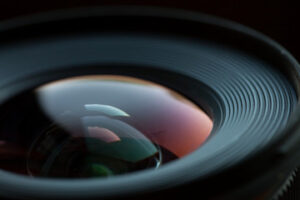One of the most rewarding DIY photography hacks involves making your lightbox. You can use anything from coffee tins to matchboxes to create a simple but effective light source. Many amateur photographers need access to high-end cameras or lighting equipment. But you can still make your photos look professional with some smart tricks.

Bokeh is the beautiful blurred background in photos caused by a wide aperture. Elegant Custom Images Inc can create amazing effects such as heart-shaped bokeh (perfect for Valentine’s Day!), snowflakes, or stars. But it’s not limited to these images and can be used on any photo. You can achieve a beautiful bokeh effect in many ways, but the most important factor is your lens. The more aperture blades and the circular shape of the diaphragm, the better the bokeh will be.
The best lenses for achieving a nice bokeh are expensive, but second-hand lenses can also be used. It’s important to position your subject far enough from the camera to keep the background out of focus. That will make the bokeh more prominent and more attractive to get the best bokeh. Choosing a good light source is essential when taking photos with a bokeh effect. Small light sources will produce a better bokeh than large light sources. Using natural light whenever possible is also good, as artificial lighting can cause unwanted reflections and shadows.
You can also try experimenting with different types of lighting to see what affects the quality of your bokeh. For example, using backlight from trees can create some very interesting effects. But be careful not to overdo it, as too much backlight can create unattractive glare and bright spots on the image.
Aside from lighting, many other factors influencing bokeh are lens choice and how you frame your shot. Your subject should be in the foreground, and your background should be at least twice as distant as your subject to get a pleasing bokeh. That is called the rule of 2 and will give you the most satisfying results.
Once you’ve mastered the basics of bokeh, it’s time to get creative! You can create different-shaped bokeh in countless ways using a few common household objects you already have. In this video, I’ll show you how to make heart-shaped bokeh, but it’s easy to adjust the size and shape of your bokeh to suit whatever you want to shoot.
Soft focus is a photography technique that blurs the image, creating a dreamy and romantic look. The method is popular in portraits, where it can add a touch of ethereal beauty to the subject. It can also smooth out textures and create a surreal atmosphere. This effect is usually achieved using a lens or filter but can also be accomplished in post-processing software.
A few ways to achieve the soft focus effect include using a lens filter or shooting in low-light conditions. The best way to get the most out of this technique is to experiment with various lenses and lighting settings. Then, choose the one that best suits your subject and tells the story you want to convey.
The soft focus effect is often used for portraits, as it helps smooth out the skin’s texture and makes the subject appear more beautiful. However, it can also be used for landscapes and other issues to create a more artistic look. This type of photography can be difficult to master, requiring a delicate balance between the subject and the background. It is important to use composition rules such as leading lines and framing to achieve the perfect balance.
Soft focus can be used in various ways, including with a lens filter, shooting at dawn or dusk, and using a diffuser. It is a great way to create a dreamy and romantic image and can be used in many different types of photography.
A soft-focus lens filter is a great way to achieve a soft-focus effect, but can be expensive. You can also create a soft focus effect in photo-editing programs like Adobe Photoshop. There are a few different methods for doing this, but using a negative clarity value is the easiest. That will reduce the micro-contrast of the image, resulting in a similar effect to a soft focus filter.
To make your soft focus filter:
- Wrap a piece of pantyhose around your camera lens.
- Secure it with a rubber band.
- Use a light-colored hose, such as off-white, to ensure the color does not interfere with your photograph. You can also use clear plastic wrap if you prefer.
- Just be sure that the material is thick enough, or it may block the light from reaching your lens.
Whether you’re running a one-person online store or a major e-commerce empire, great product photography is essential. This commercial form of photography focuses on enticing customers to buy your products by displaying their features and benefits while also giving consumers a sense of the scale and context of each item.
A good product photograph will feature a well-lit item in a clean backdrop. Props can be used but should be kept to a minimum to avoid distracting from the main subject. Often, the rule of thirds is used to create well-balanced compositions. In addition, it’s important to capture different angles of the product and include close-up shots of any intricate details.
In the age of digital marketing, a high-quality product photo can make or break your business. Consumers will look for similar items from other retailers if your product photos don’t live up to expectations. As a result, your product photos must be high-end and professionally shot.
Professional product photography is expensive, but it’s still possible to do it on a budget with the right tools. For example, if you’re you’re shooting in your home or office, try using the natural light that comes through a window to illuminate your product. That will eliminate the need for pricey artificial lighting and help to produce more balanced images. You can even take your product photos to the next level by capturing them on a homemade DIY reflector, which will bounce light back into the scene and reduce shadows.
Another option for product photography is to take the shot outdoors. This type of shoot is great for items that work best in a natural environment, such as outdoor equipment or furniture. You can also use natural lighting for this shoot, but you’ll need to adjust it to suit the ambient light and weather conditions.
Another type of product photography is lifestyle shots, which feature models and show products in a natural setting. This style of photography is great for showcasing the functionality of your products and can be used for both print and digital advertising campaigns.
Monolights are a studio flash that combines a light head and power source into a single compact unit. These self-contained flash units can be powered by mains electricity or run on rechargeable batteries, giving photographers more flexibility. They can be used in conjunction with a variety of light modification attachments such as umbrellas, softboxes, and reflectors. They can also be controlled wirelessly using a line of communication with your camera.
Monoblocs are available as both TTL (through the lens) and non-TTL models. TTL-capable monolights communicate with your camera’s built-in flash meter to adjust their output automatically for various scene conditions. Non-TTL strobes require you to set the flash power manually for each scene.
Besides varying the power of their flash tubes and capacitors, moonlights also differ in other ways. These differences include modeling light performance, power output consistency, feature sets, and parts availability. Some monolights have a fan that cools the model flash tube, reducing its operating temperature and improving its power output consistency. Other monolights have an on-off switch that allows the photographer to control the flash output independently of the modeling light.
Other considerations when selecting a monolight are its cost and how it attaches to light stands. Monolights with a quick-release system are easier to mount on a shelf and are less likely to fall off during use. They also tend to be lighter than monolights with a clamp mount.
Many monolights come as complete kits with a stand, a case, and a pair of umbrellas. That makes them convenient and economical to own for basic indoor lighting setups. More sophisticated shoots can call for larger or more powerful strobe setups.
A beauty dish is a circular reflector that attaches to the end of a monolight or Speedlight. It forces the light to disperse into a bowl shape, softening its quality and adding a nice rim light to subjects. They can be found in white or silver-coated versions, each providing a slightly different color to the light. If you’re shooting portraits, a beauty dish is a must-have accessory.
